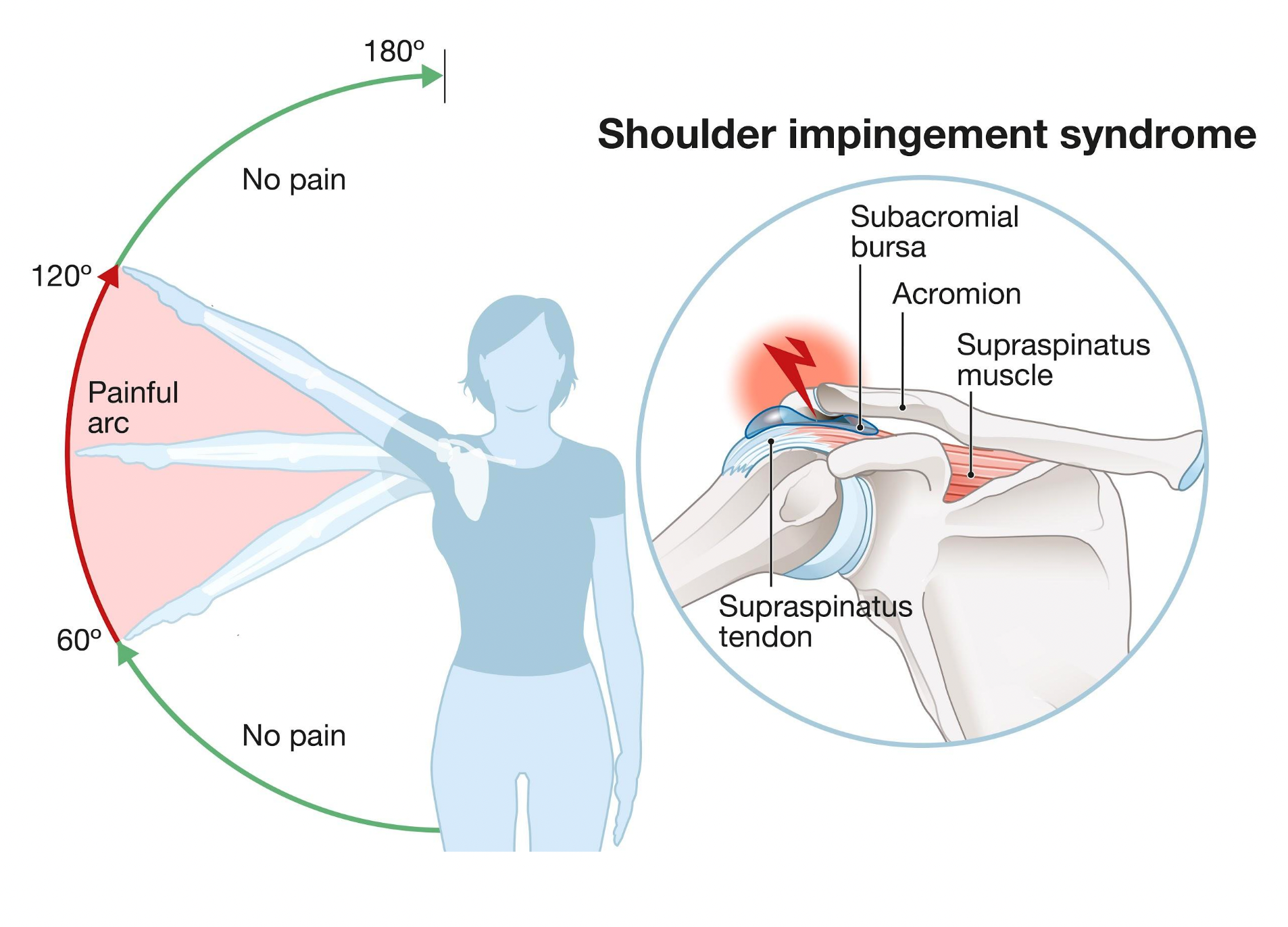Subacromial impingement (aka anterior shoulder impingement) is one of the most common conditions that we see here in Whitefish Chiropractic. In this condition, patients tend to complain of pain in the front of their shoulder with the movement of the arm, specifically overhead movements or reaching behind them to scratch their back or take off a bra. These everyday positions can increase the likelihood of creating pain in the anterior portion of the shoulder. For most people, it will be position-dependent, and what happens is the supraspinatus tendon can become entrapped between the humeral head and the clavicle, or a bone that comes off the scapula called the acromion.
What Causes Impingement?
In the case of impingement, oftentimes there is a fancy term associated with why this condition happens, this is called scapular dyskinesis. This is a fancy term to say the shoulder blade doesn’t move on the back in the most efficient way possible. Often, the shoulder blade will want to suddenly wing forward while the arm is moved through a range of motion, causing the entire shoulder to drift forward into a slumped, rounded position. Since we live in a world of technology, where we spend hours on computers or phones in a slumped forward position creating a concavity in the chest, we tend to be prone to creating more opportunities for the shoulder to become impinged and generate pain.
When identifying scapular dyskinesis, it often will start by watching how the shoulder blade moves through the range of motion on the back while the arm is raised and lowered. This will determine what exercises are needed to correct the movement into the most efficient and ideal range of motion.
How do We Diagnose Impingement at Whitefish Chiropractic?
When a patient presents with a condition that is similar to the symptoms of Subacromial impingement, it is essential that our Whitefish Chiropractic team performs appropriate diagnostics to rule out other conditions such as:
- Rotator Cuff Strain
- Rotator Cuff Tears
- Bicipital Tendonitis
- Labrum Injuries
These conditions are ruled in or out of a diagnosis by checking the strength of the different muscles of the shoulder joint in various positions. Once that is ruled out, we can confidently diagnose the patient with “Impingement Syndrome”.
Treatment for Subacromial Impingement
Treating the Muscles
Our main approach when treating conditions like this is utilizing a well-known soft-tissue treatment called Active Release Technique (ART). This is a soft tissue technique that can be considered a functional massage where a doctor is applying pressure to a specific muscle while the patient moves through a specific motion in the desired area. This will help break tension within the muscle and take pressure off the tendon.
Another manual therapy technique that we often use is the Graston Technique. This technique, commonly known as “muscle scraping”, uses a metal instrument with a beveled edge that is scraped across that tissue. This will subject the body to create more blood flow in the area and increase the full range of motion of that area.
The last technique is dry needling, which is a great tool to use to contact areas that are too tough to contact with fingertips. The needle is able to get into the tendon itself and increase targeted inflammation and help break down tension in the muscle.
Rehab Approach
As far as exercises are concerned, the scapular dyskinesis, or the inability to control the shoulder blade correctly, often is the driving force for what exercises will be prescribed. The exercises used can be done at home or in the office that will target the correct muscle group that stabilizes the shoulder blade onto the back. Since the humeral head sits on the scapula, if muscles are not stabilizing correctly, the humeral head will move into a poor position, typically forward, and increase the amount of impingement occurring.
Bringing the shoulder blades back and down while activating the correct muscles is often done through exercises called Y, T, W and L’s. To describe these positions, the arms will start out in a position that looks like a “Y”. In this position the thought will be to pull the shoulder blades together and keep them together while moving from the “Y” position into the “T” position with the arms out to the side. Once in the “T” position, the next movement will be the “W” position where the elbow is brought down and bent so that a “W” is created with the arms then into the double “L” position.
The goal of the rehab side of the treatment is to help strengthen the muscles that control the scapula. This will make a better foundation for the shoulder to move on the back.
If you think you might be having shoulder impingement, if you’re getting pain with overhead movements or with the extension of the shoulder and it may be radiating down into the deltoid, give us a call at Whitefish Chiropractic.


